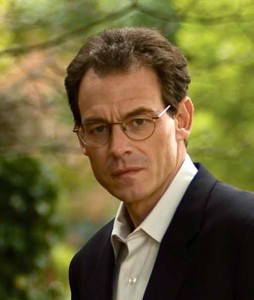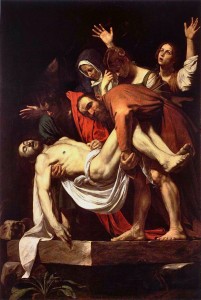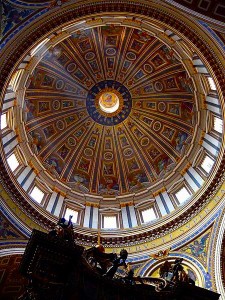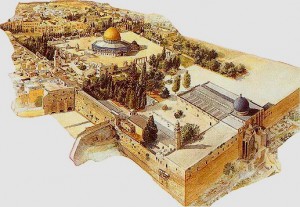“Invent a good cover story…and whatever you do, don’t screw it up. Otherwise, there’s a very good chance you’re going to start World War Three.”
 Daniel Silva, who was a journalist for years before he became a novelist, has always taken care to create plots that relate directly to political and historical realities. The involvement of the papacy in the Holocaust and their efforts to hide it, the indoctrination and training of an American terrorist in Yemen, the actions of a Russian oligarch and lethal arms dealer, and the attempts of a former obersturmfuhrer, now living in Vienna, to wipe out all traces of the Holocaust have all been subjects of his thrillers. This novel, however, comes closest to dealing with immediate issues of world politics, illustrating clearly and unambiguously some of Israel’s most pressing difficulties with its Arab neighbors and confirming our worst fears for the future of the Middle East. In doing so, Silva goes way beyond the facts that we all understand from the media, elucidating the complexities and the commitments of both the Arabs and the Jews to preserving “their own” land and especially Jerusalem.
Daniel Silva, who was a journalist for years before he became a novelist, has always taken care to create plots that relate directly to political and historical realities. The involvement of the papacy in the Holocaust and their efforts to hide it, the indoctrination and training of an American terrorist in Yemen, the actions of a Russian oligarch and lethal arms dealer, and the attempts of a former obersturmfuhrer, now living in Vienna, to wipe out all traces of the Holocaust have all been subjects of his thrillers. This novel, however, comes closest to dealing with immediate issues of world politics, illustrating clearly and unambiguously some of Israel’s most pressing difficulties with its Arab neighbors and confirming our worst fears for the future of the Middle East. In doing so, Silva goes way beyond the facts that we all understand from the media, elucidating the complexities and the commitments of both the Arabs and the Jews to preserving “their own” land and especially Jerusalem.

Gabriel Allon, Silva’s hero for twelve of his fifteen novels, now sixty, is a former artist whose early work for Israeli intelligence included being the instrument of vengeance against the assassins of Israeli athletes at the Olympics. None of the assassins escaped his wrath. Unfortunately, other assignments on behalf of Mossad, almost equally bloody, led also to the killing of his beloved young son, Dani, an event so traumatic for his wife that she has been hospitalized and unable to function emotionally ever since. Allon, his heart broken, no longer has the inspiration to paint and now works as an art restorer, often for the Vatican. There, he recently saved the life of the Pope during an al-Qaeda attack on St. Peter’s Square which killed many others. Though he has officially retired from Mossad, he has often answered the call to serve on special assignments, staying in touch with the men with whom he has risked his life for over thirty years.
In this novel, Allon is restoring “The Deposition of Christ,” widely regarded as Caravaggio’s finest painting. When the body of a female curator in the antiquities department is found beneath the Michelangelo-designed dome of the basilica one night, Msgr. Luigi Donati, described as “a clerical Ra sputin” and “the true power behind the papal throne,” brings Allon to the site of the death. Claudia Andreatti appears to have committed suicide by jumping from the walkway around the base of the dome, the highest dome in the world. Both men conclude that this death was probably murder, something they intend to keep quiet. Claudia had been investigating the provenance of the Egyptian and Etruscan artifacts stored at the Vatican, and she may have uncovered evidence of a major plot to bring stolen antiquities from Lebanon, Syria, and Egypt into Rome, with the money from their sales being laundered through Vatican accounts to benefit unknown outside sources.
sputin” and “the true power behind the papal throne,” brings Allon to the site of the death. Claudia Andreatti appears to have committed suicide by jumping from the walkway around the base of the dome, the highest dome in the world. Both men conclude that this death was probably murder, something they intend to keep quiet. Claudia had been investigating the provenance of the Egyptian and Etruscan artifacts stored at the Vatican, and she may have uncovered evidence of a major plot to bring stolen antiquities from Lebanon, Syria, and Egypt into Rome, with the money from their sales being laundered through Vatican accounts to benefit unknown outside sources.
While Claudia’s death is being quietly investigated, Allon learns from Shimon Pazner at the Israeli Embassy that Hezbollah, aided by Iran, may be planning a major attack on an unknown Israeli site somewhere in Europe. When Allon follows up on this by going to Israel to talk with Intelligence, he also learns that the Palestinians in Jerusalem have been systematically excavating beneath Temple Mount, trying to find and destroy any evidence that the Jews once had a temple on the site, built much earlier than the mosque that is currently there. The militant Palestinians already deny the Holocaust, and if they can prevent evidence from being discovered about the early temple on the site, they believe they can inspire Muslims around the Middle East to attack and eliminate Israel from the land they claim exclusively as their own.

Eventually, these two plots coincide, but not before Silva has explored the complexities of the financial dealings at the Vatican; the hidden world of the antiquities market and its financing; the personal alliances within the Vatican and within Rome itself; and the financial and cultural interconnections among the Palestinians, Hezbollah, and Iran, especially as they relate to the future of Israel. As the violence which always seems to accompany Gabriel Allon continues, no compromise among the various adversaries seems possible, making the reader even more aware of the increasing tensions of the area and the unlikelihood that any solution, other than war, will be the result.
Silva spends time, at the end of the book, discussing the situation regarding Egypt, with its ninety million people and its current non-functioning, but militantly anti-Israeli government, giving detailed information about the anarchic Sinai peninsula and the immediate threat it represents to Israel. He also describes President Clinton’s meetings in 2000 with both Israeli Prime Minister Ehud Barak and Yasser Arafat at which he negotiated the terms of a peace agreeme nt in which a Palestinian state would be created in the Gaza strip. The Palestinians would also gain ninety-six percent of the West Bank. “The Temple Mount plateau, sacred to the three Abrahamic faiths, would [be] included in the Palestinian state, while the Western Wall and the Jewish Quarter of the Old City would remain under Israeli control.” Ehud Barak accepted the terms, but, in a surprising turn of events, Arafat did not. “President Clinton was remarkably candid about his feelings toward the man whose ‘colossal mistake’ had denied him a historic foreign policy achievement. ‘I am a failure,’ he told Arafat during a bitter telephone conversation. ‘And you have made me one.’ ”
nt in which a Palestinian state would be created in the Gaza strip. The Palestinians would also gain ninety-six percent of the West Bank. “The Temple Mount plateau, sacred to the three Abrahamic faiths, would [be] included in the Palestinian state, while the Western Wall and the Jewish Quarter of the Old City would remain under Israeli control.” Ehud Barak accepted the terms, but, in a surprising turn of events, Arafat did not. “President Clinton was remarkably candid about his feelings toward the man whose ‘colossal mistake’ had denied him a historic foreign policy achievement. ‘I am a failure,’ he told Arafat during a bitter telephone conversation. ‘And you have made me one.’ ”
Silva concludes:
“At some point soon, Middle East watchers agree, there is likely to be another eruption of violence, a third intifada. Bombs will explode, bullets will fly, and children on both sides of the long and bloody contest over the twice-promised land will die. And…it would have ended more than a decade ago if Yasser Arafat had only found the courage to speak a single word: ‘Yes.’ ”
This novel makes many of the issues involved in this problem far more vivid than they have ever been before in fiction, at least for me, and those who are interested in the future of the Middle East will not want to miss this thriller, one of Silva’s best.
ALSO reviewed here: Silva’s THE CONFESSOR, THE ENGLISH GIRL, and THE HEIST
Photos, in order: The author’s photo appears on http://www.readersdigest.com.au
“The Deposition from the Cross” by Caravaggio (1602 – 1603) is the painting on which Gabriel Allon is doing some restoration. http://en.wikipedia.org
The Dome of St. Peter’s, designed by Michelangelo, is shown on http://en.wikipedia.org
The al-Aqsa Mosque and the Dome of the Rock, pictured here, are further described on http://www.atlastours.net
